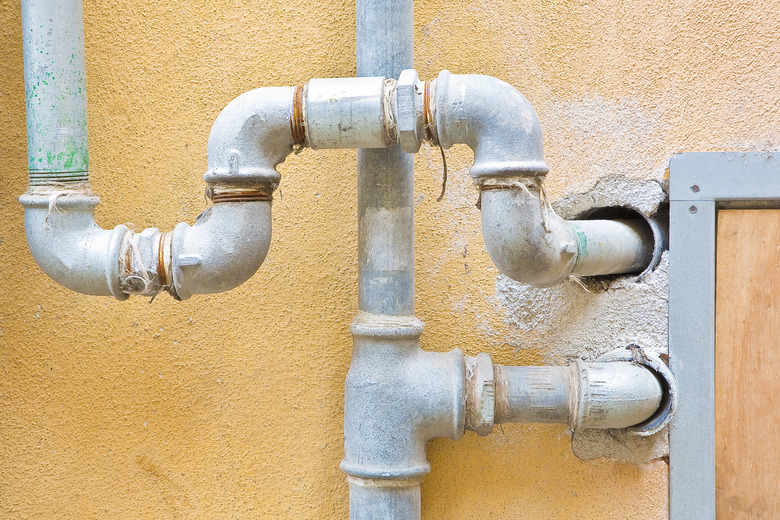How To Separate A Rusted Galvanized Pipe
We may receive a commission on purchases made from links.
Plumbing pipes made of galvanized steel were all the rage in the early 20th century, but it turns out that the zinc coating deposited on the steel pipes during the galvanizing process isn't all that long-lasting. It wears from the inside of the pipe faster than it does from the outside, corroding the metal, blocking the flow of water, and reducing water pressure at faucets. Even before that happens, it wears from the threads of the fittings, making it notoriously difficult to separate the pipes.
Sometimes, all it takes is brute force to separate galvanized fittings, and most plumbers have a pair of hefty pipe wrenches for this purpose. When brute force doesn't work, you can try other methods to separate the pipes, some of which you've probably already thought of, and some of which you might not have considered. In the end, you may end up having to cut the pipe, but that's a last resort, and hopefully, it won't come to that.
Lubricate the Threads
Lubricate the Threads
Besides pipe wrenches, most plumbers also carry a can of spray lubricant in their tool box for situations like this. Two of the most common are WD-40 and Liquid Wrench — and both work well — but there's a third option that's even more effective, and that's PB Blaster.
Angle the sprayer to get the liquid underneath the fitting and give it a generous dose of spray. Wait a few minutes and then clamp one pipe wrench around the fitting and one around the pipe and try turning the pipe counterclockwise with respect to the fitting. Increase your leverage on the wrenches by fitting lengths of 1-inch steel pipe over the handles and gripping the handles as far from the pipe as possible. Spray more lubricant if needed but if the fitting won't release after a few sprays, it's time to move on to a different method.
Use Candle Wax
Use Candle Wax
Wax from a paraffin candle lubricates like spray lubricant, and if you heat the joint before applying it, it will wick into the threads much like solder wicks into a copper joint when you're sweating it.
Heat the joint with a propane torch, touch the candle to the hot joint, and let the wax wick in. Using your wrenches, try turning the joint while it's still hot. If you don't get it the first time, try, try again. With the combination of heat and wax, you should eventually be successful.
Wear a paint-grade respirator when applying heat to a galvanized pipe. Heat vaporizes the zinc coating and releases zinc oxide fumes that can cause zinc oxide poisoning if you inhale too much.
Use a Cable Tie as a Wrench Substitute
Use a Cable Tie as a Wrench Substitute
If you don't have a wrench big enough to fit around the fitting you're trying to unscrew, a cable tie may help. Choose a beefy one that won't break, wrap it tightly around the fitting, and use pliers to pull the end that's hanging freely in a counterclockwise direction. If you need a little heat to help loosen the joint, use a hair dryer since a torch will obviously melt the cable tie.
